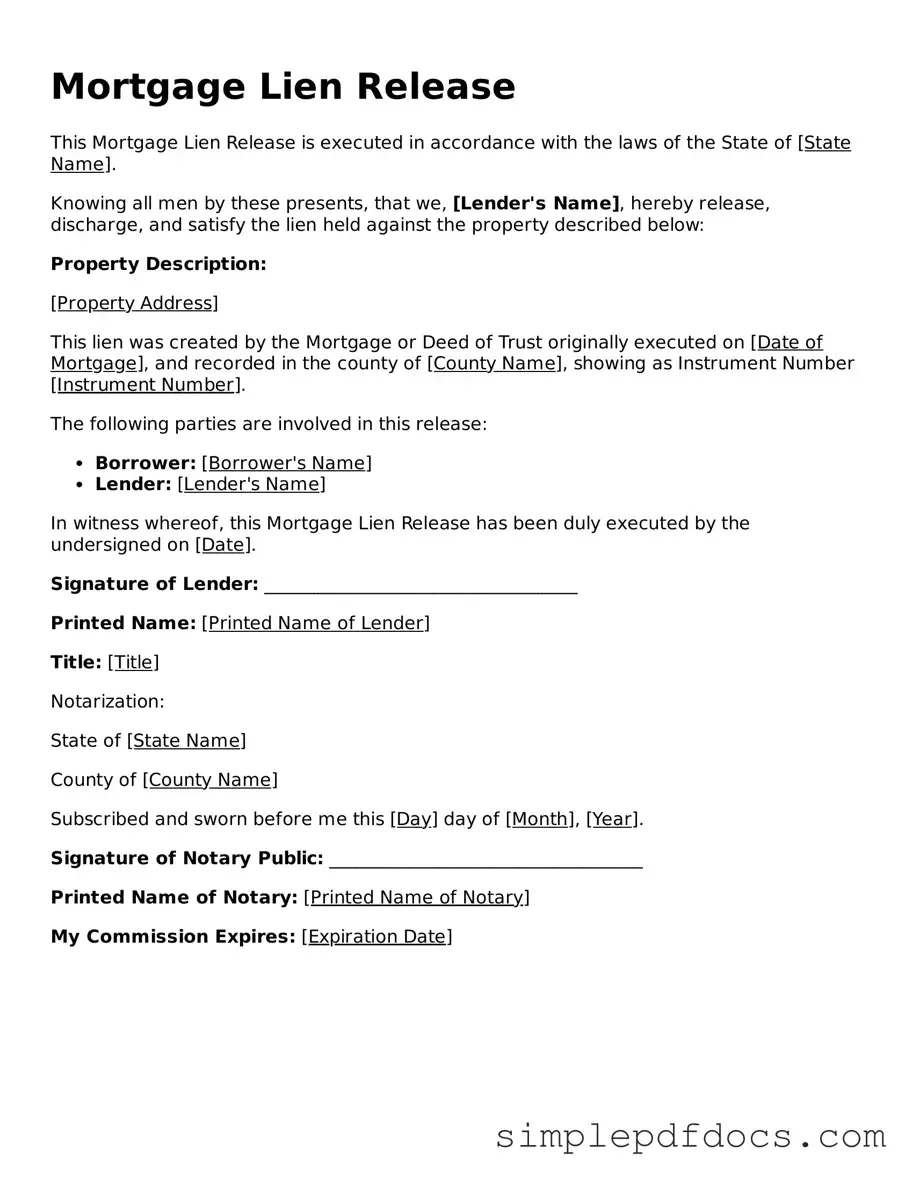When a homeowner pays off their mortgage, a crucial step in the process is the completion of a Mortgage Lien Release form. This document serves as a formal declaration that the lender no longer has a claim to the property, effectively removing the lien that was placed on it during the loan period. The form typically includes essential details such as the names of both the borrower and the lender, the property address, and the loan number. By signing this form, the lender acknowledges that the debt has been satisfied, thereby allowing the homeowner to enjoy full ownership without any encumbrances. It is important for homeowners to ensure that this document is properly filed with the local land records office, as it provides legal proof that the mortgage obligation has been fulfilled. Failure to complete this step can lead to complications in future property transactions, as potential buyers or lenders may be unaware that the lien has been released. Understanding the significance of the Mortgage Lien Release form is essential for any homeowner looking to secure their property rights and move forward with peace of mind.
